Highlights in South Dakota Mines History
South Dakota Mines History
Explore Highlights in South Dakota Mines History (below) - or learn more about the history of South Dakota Mines.
South Dakota Mines has a long history, one that started before South Dakota gained statehood. Below we highlight a few of the many special moments in our university's evolution, interwoven with key historical events.
History of the University
- In 1876, before South Dakota even became a state, Rapid City was laid out. Only months later, Custer was overwhelmingly defeated at the Battle of Little Big Horn by a combination of Lakota, Northern Cheyenne, and Arapaho Native Americans, led by Crazy Horse and Chief Gall.
- The Dakota School of Mines was founded in 1885, with the cornerstone of the first building being dedicated on August 19. In the same year, William P. Blake donated 41 scientific and technical books to form the beginning of the library. Gilbert Bailey loaned his collect of fossils and minerals, providing the foundation for the Museum of Geology. The first class was held almost two years later in 1887.
- South Dakota became a state on November 2, 1889, simultaneously with North Dakota. Soon after being awarded statehood, the Dakota School of Mines became known as the South Dakota School of Mines.
- The campus continued growing and student organizations were established. In 1888, the Metallurgy Building was completed. The first football team, The Longlocks, was established, near 1895. In 1901, the front portion of the Liberal Arts Building was completed. In 1901, the school newspaper, The Aurum, was published for the first time.
- Time-honored traditions like M-Day began at this time. The first M-Day was on October 5, 1912, when the “M” was constructed on M-Hill.
- The world was thrown into pandemonium in 1914, with the beginning of World War I. 3 years later, the US enters the war. In 1918, training detachments began to be housed on campus. Shortly after, in the same year, Germany was defeated and World War I ended.
- Campus expansions and improvements continued after the chaos of the War ended. In 1913, electrical engineering course of study was offered for the first time. In 1921, work was completed on the new engineering building, now called the McLaury Building. The M Club was formed at Mines in 1922. On April 27, 1928, the cornerstone was laid for the School of Mines gymnasium, which was completed the following year.
- The nation faced more turmoil in 1929 when the Stock Market crashed, setting off a worldwide economic depression. Franklin D. Roosevelt was elected 32nd president in 1932 and worked to build the US economy. The following year, prohibition was repealed.
- Joseph Connolly, the namesake for Connolly Hall, took his place as 10th president at Mines in 1935. In 1938, O'Harra Field was completed.
- The shaky peace after World War I was broken in 1939 when World War II breaks out. On December 7, 1941, the Japanese execute an unprecedented attack on Pearl Harbor. The US ends their policy of isolationism and joins the war the following day. The campus was used for Army Specialized Training Program, and some buildings become barracks. In 1945, World War II ends and atomic bombs are dropped on Japan.
- More programs were being offered at Mines. In 1942, a degree program in Engineering Physics was established, as well as Chemistry and Industrial Engineering. A year later in 1943, a degree program in mechanical engineering was established.
- Connolly Hall was completed in 1947.
- With expanded university offerings, more buildings were needed. The Civil/Mechanical Building was completed in 1950. The Chemistry/Chemical Engineering Building was completed in 1957. In the same year, a mathematics course of study was established. In 1959, the March/Dake Hall was completed.
- The 1960s brought new technologies and changes to Mines. In 1961, the first computer was constructed on campus. Construction began on the Surbeck Center in January 1962. The following year, the Mineral Industries Building was completed. On September 5, 1969, Palmerton Hall was completed and dedicated.
- Ph.D. programs expanded in 1967, with Ph.D. programs authorized for electrical engineering, geology, and geological engineering.
- In May 1970, 4 Kent State University students are killed while protesting the Vietnam War in what is referred to as the Kent State Massacre. On June 17, 5 men are arrested breaking into the Democratic Headquarters at the Watergate Hotel. Due to controversy stemming from Watergate, President Richard Nixon resigns. In 1979, Americans were taken hostage at the embassy in Iran. They were returned 444 days later.
- Research at Mines grew in the late 1970s. In 1979, nearly $2 million was expended for research during the year, up from only $100,000 in 1964.
- Construction of the Classroom Building begins in 1988 and was completed the following year. The Liberal Arts building was condemned in the same year and demolished in 1994. The Tech Learning Center begins providing tutoring services for students.
- The Internet was brought to campus in 1992. TechNeT also became available on campus.
- The prestige of the School of Mines grows in the 1990s. In 1993, the Devereaux Library was designated as the Patent and Trademark Depository for South Dakota. In 1993, the School of Mines site was selected for the National Weather Service Office for western South Dakota. In 1995, the Mines team wins the national concrete canoe competition. The Memorial Arch and Plaza are constructed in 1996. In 1997, the Center for Advanced Manufacturing & Production (CAMP) was established on campus. In 1999, Sun Microsystems established a high-performance computing lab on campus.
- In 2004, Peterson Hall opens to house the steadily-growing student body. The Tech Development Laboratory opens, housing several modern research activities and projects. In 2006, the Black Hills Business Development Center opens on campus.
- In an effort to provide support to women students, the Women in Science and Engineering (WiSE) program was implemented in 2006.
- The School of Mines was recognized in the national spotlight in 2007 when it was named one of “America's 100 Best Buys” for the 10th consecutive year. In 2008, it was announced that the School of Mines is the only university in the nation where starting salaries for graduates are equivalent to the cost of a four-year degree, the nation's best college investment. In 2009, Mines was named the Military Friendly School for 2010 by G.I. Jobs Magazine. In 2012, Bloomberg News reported that Mines graduates out earn Harvard graduates when they enter the job market, and the story goes viral.
- Research at Mines reached new heights in 2009, when Mines researchers were awarded nearly $21 million in research and development funding, the highest amount in the history of the university.
- In April 2013, Dr. Heather Ann Wilson was selected to be the 18th President of the South Dakota Mines. In 2014, Mines was accepted as a full member of the Rocky Mountain Athletic Conference, and in May construction began on the new student Wellness and Recreation Center. In October, the American Society of Civil Engineers (ASCE) unveiled an educational sculpture, showing different types of welds on the northwest side of the Civil & Mechanical Engineering Building. Also in October, Winter Storm Atlas drops 23.1 inches of snow on Rapid City.
- In 2014, the school offered two new programs: a PhD in Civil & Environmental Engineering as well as a minor in Petroleum Systems
- The school dedicated the Veurink Chemical Engineering Unit Operation Laboratory in November of 2016. The lab was made possible thanks to a donation from Gary and Ruth Veurink.
- In March 2017, the school announced a multi-phase renovation to the nearly century-old McLaury Building. The renovations included updating facilities, improving efficiency, and bringing the building into compliance with the Americans with Disabilities Act. In April, there was the grand opening of the newly renovated Chemical & Biological Engineering/Chemistry Building (CBEC). In May 2017, the US Senate confirmed the appointment of President Heather Wilson as Secretary of the US Airforce and Jan Puzynski, Ph.D. became interim president. In July 2017, researchers at Mines were on hand for the groundbreaking ceremony that marked the start of construction on the Long-Baseline Neutrino Facility (LBNF) at the Sanford Underground Research Facility (SURF). The facility will become home to the international collaboration known as the Deep Underground Neutrino Experiment (DUNE). Later that year, a groundbreaking ceremony and press conference was held at Dunham Field at O'Harra Stadium to kick off the upgrades to O'Harra stadium. Mines helped host the ICPC world championships in July, bringing in the top collegiate programmers from around the world. In November 2017, Mines selected James Rankin, PhD, a Mines alumnus, as the 19th President of South Dakota Mines.
- Mines offered a new undergraduate degree in Biomedical Engineering in 2018 and a new master's in nanoscience and engineering. In April 2018, the Mines Mining and Mucking Team took home first place in the co-ed/mixed division at the International Collegiate Mining Games in Cornwall, England. In May 2018, a groundbreaking was held for the new Pearson Alumni and Conference Center. In September 2018, Mines opened the Hardrocker eSports Arena. In October 2018, Mines reorganized two existing departments to create a new Computer Science and Engineering Department.
- In 2019, the school offered a new degree, Business Management in Technology, in collaboration with Black Hills State University in Spearfish, but the degree will be issued by South Dakota Mines upon graduation. Ground is broken for what would become the David Lust Accelerator Building. Mines received a $3.6 million donation for the Department of Civil Engineering. The endowed gift came from the estate of Willard and Billie Kaye Goodman.
- The World Health Organization declares Covid-19 a pandemic on March 16, 2020, in the middle of Spring Break. The Mines campus shut down. Spring Break was extended an extra week while university officials made decisions on how to finish the spring semester safely. It was determined to offer classes online for the remainder of the semester. In the fall, campus opened and classes were offered through both in person and hybrid formats. Social distancing was in place, and masks were required indoors.
- The mask mandate was lifted, and in the fall of 2021, Mines resumed normal operations in a pre-Covid 19 format. Mines adds a Master's Degree in Industrial Engineering in 2021. The Department of Chemical and Biological Engineering was renamed to the Karen M. Swindler Department of Chemical and Biological Engineering in honor of alumna Karen Swindler, the first time such a department was named after a woman in the nation. The school partnered with the U.S. Army Corps of Engineers' Engineer Research and Development Center's Cold Regions Research and Engineering Laboratory (CRREL) on a new project called “Materials and Manufacturing for Cold Regions.” The effort includes a five-year, $11.2 million grant to fund faculty and student research at Mines from multiple engineering and science disciplines.
- In March 2022, the university was given permission by the South Dakota State Legislature and Gov. Kristi Noem to purchase the Ascent Innovation Building on campus that previously housed Elevate Rapid City. The departments of Electrical Engineering and Computer Science and Engineering were merged into one department in July of 2022. In August 2022, the school offered a new specialization in Data Science for Math majors as well as a new PhD in Data Science and Engineering. Also that month, the ribbon was cut on the newly renovated Devereaux Library Building. In October 2022, ground was broken on the new Nucor Mineral Industries Building. Nucor donated to the project with the largest corporate gift in university history, totaling $5 million, to help fund a new Mineral Industries building on campus.
The success of South Dakota Mines is the legacy of many committed and visionary individuals who have led the university throughout its history. Meet our university presidents.
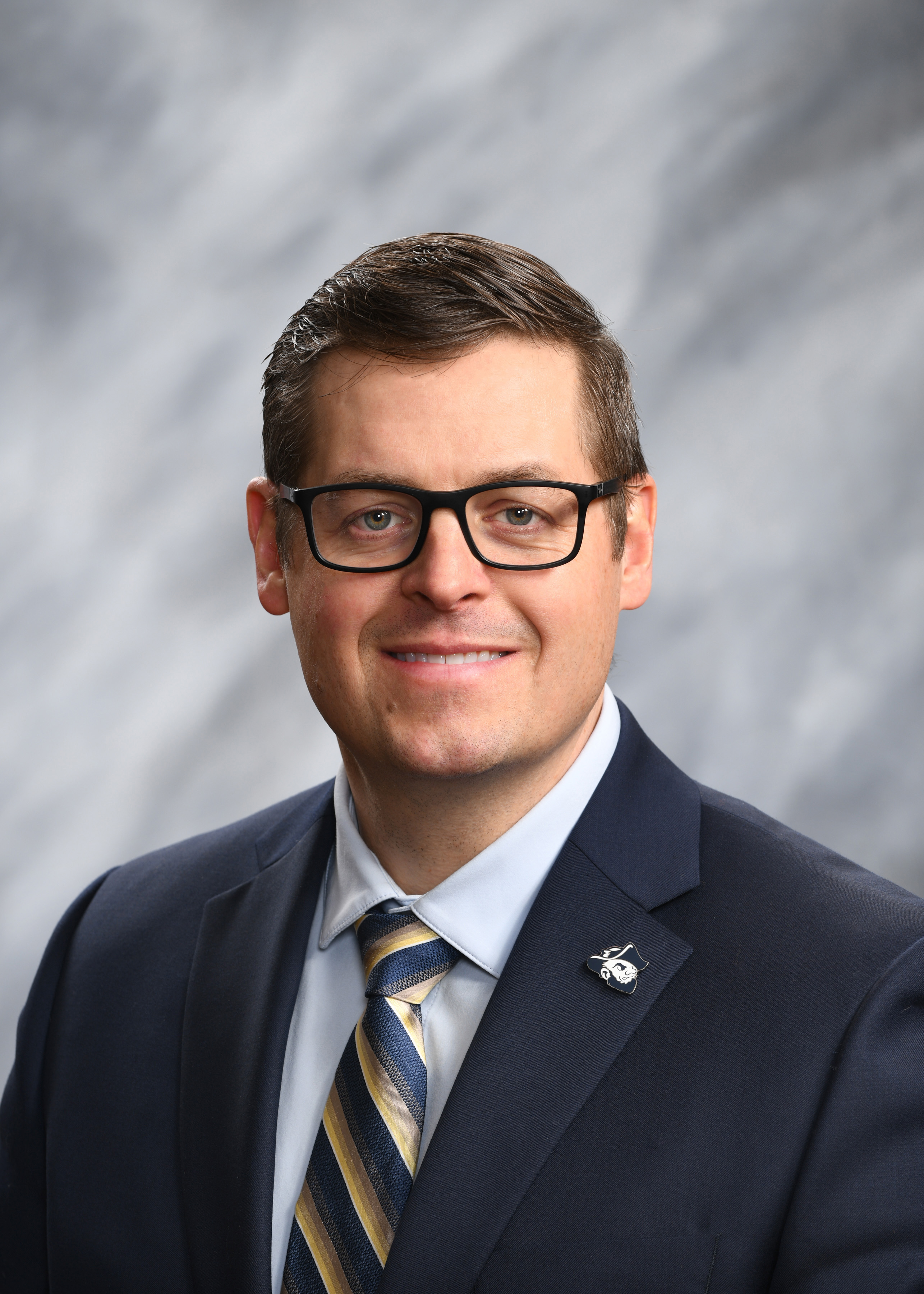 Brian Tande
Brian Tande
Term of office: 2025 - Current
Education: University of Minnesota (B.S.), University of Delaware (Ph.D.)
Dr. Tande brings a wealth of experience in engineering education, research and leadership to the presidency, positioning the university for continued excellence and innovation in science, technology, engineering, and mathematics education. He previously served as the dean of the College of Engineering and Mines at the University of North Dakota, as well as several other roles there; he also served as graduate programs director and associate professor at Kansas State University.

Lance Roberts
Term of office: Interim President, 2024
Education: South Dakota Mines (B.S and M.S), University of Missouri-Kansas City (Ph.D.)
Dr. Roberts, Provost and Vice President for Academic Affairs, served as interim president in 2024. He began his career at Mines as an assistant professor in civil and environmental engineering in 2014, eventually becoming a professor and head of the Department of Mining Engineering and Management. He also spent time in industry as a bridge design and geostructural engineer and served as the senior vice president of the mining and energy division at RESPEC.
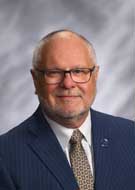
James (Jim) Rankin
Term of office: 2018-2024
Education: South Dakota Mines (B.S.), Iowa State University (M.S. & Ph.D.)
Dr. Rankin returned to his alma mater as the 19th president in January 2018. During his presidency, he successfully headed the effort to build a new Mineral Industries Building; the purchase of the former Ascent Innovation Building from Elevate Rapid City, which was converted into the Vanderboom Laboratory for Entrepreneurial Research; and the renovation of the Devereaux Library. He was closely involved in creating the Innovation District from east of 5th Street to campus, advocated for upgrades to the O’Harra Stadium, and led the university through the COVID-19 pandemic. He also helped secure gifts that will create lasting impacts on the university, including the largest individual donation and the largest corporate gift to the university. His fundraising efforts helped double the funds raised by the Center for Alumni Relations & Advancement, further strengthening the university's financial foundation.
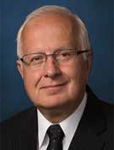
Jan A Puszynski
Term of office: Interim President, 2017-2018
Education: M.S., Technical University, Wroclaw, Poland; Ph.D., Institute of Chemical Technology,
Prague, Czechoslovakia
Dr. Puszynski, VP of Research, served as Interim President in 2017 and has been educating undergraduate and graduate students at Mines for nearly 26 years, joining the faculty in 1991 as a professor of chemical engineering. During his tenure in Rapid City, he has established a national and international reputation in materials research and received several multi-million-dollar research awards.
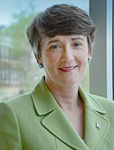
Heather Ann Wilson
Term of office: 2013-2017
Education: United States Air Force Academy (B.S. 1982), Oxford University (M.S. and
D.Phil. 1985)
President Wilson championed the development of the Student Success Center, the Math@Mines program, the student business plan competition and entrepreneurs in residence, and the Freshmen Day of Service. She oversaw expansion of academic programs with the addition of a PhD in civil engineering, an Energy Resources Initiative involving both teaching and research, the undergraduate honors program, the pre-health professions pathway, as well as the addition of numerous minors. She was instrumental in securing funds and guiding improvements to campus facilities, including the Stephen D. Newlin Wellness and Recreation Center, O'Harra Stadium renovations, construction of Placer residence hall, and renovations of the chemistry and biological sciences and McLaury buildings. She successfully led the effort for Mines to join the NCAA Division II Rocky Mountain Athletic Conference. She was also a passionate advocate for the university and its students and more closely connected the university to the community.
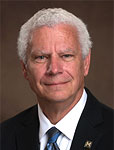
Duane Charles Hrncir
Term of office: Acting President 2012-2013
Education: University of Alabama (B.S. 1974), University of Massachusetts (M.S. 1976),
Texas A&M (Ph.D. 1979)
Dr. Hrncir came to Mines in 2005 as the first Dean of the College of Science and Letters. In 2009 Hrncir was appointed to serve as Vice President of Academic Affairs and Provost of the university. During his time as Acting President, the Nexus SmartPay pilot program was initiated at SD Mines and the Physical Training Building was repurposed as the campus Music Center.
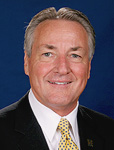
Robert Andrew Wharton
Term of office: 2008-2012, died in office
Education: Humbolt State University (B.A. 1976, M.A. 1978), Virginia Polytechnic Institute
(Ph.D. 1982)
A scientist and an educator, Dr. Wharton initiated the Mines Medal and developed a comprehensive Campus Master Plan. During his tenure the James E. Martin Paleontological Research Lab, the Downtown Campus, and the Chemical/Biological Engineering/Chemistry Building opened their doors.
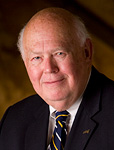
Charles Pierce Ruch
Term of office: 2003-2008
Education: College of Wooster (B.A. 1959), Northwestern University (M.A. 1960 and Ph.D. 1966)
A life-long educator, Dr. Ruch guided SD Mines for 5 years. During his administration Peterson Hall, the Black Hills Business Development Center, March/Dake Plaza, Computational Mechanics Lab, Tech Development Lab and Student Wellness Center were opened. The Women in Science and Engineering program (WISE) and the tablet program began during Ruch’s term.
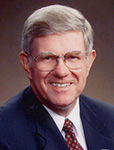
Richard Joseph Gowen
Term of office: 1987-2003
Education: Rutgers University (B.S. 1957); Iowa State University (M.S. 1960 and Ph.D.
1962)
Gowen came to Mines campus in 1977 as Vice-President and Dean of Engineering, a position he held until 1984 when he assumed the presidency of Dakota State College. In January 1987 he returned to Rapid City as President of the School of Mines.
While Gowen was president the Classroom Building and the Arch were constructed. The SD Mines Concrete team won a national title; EPSCoR began funding a multitude of research on campus; the SKILL program and summer camps were established as were CAMP and AMP. The Children’s Science Center and Little Miners’ Clubhouse opened their doors and the internet arrived on campus. Gowen led the drive to develop an underground laboratory at the site of the former Homestake Gold Mine.
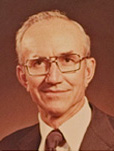
Richard August Schleusener
Term of office: 1976-1986; Acting President 1975-1976
Education: University of Nebraska, Lincoln (B.S. 1949), Kansas State University (M.S.
1956), Colorado State University (Ph.D. 1958)
Schleusener came to Mines campus to assume the directorship of the newly established
Institute of Atmospheric Sciences in 1964. He served in that capacity until 1974 when
he was named Vice President and Dean of Engineering. In 1975 Schleusener became Acting
President and in March 1976 was named the institution’s 14th president.
During Schleusener’s administration the King Center opened and TOTH (The Tower on
The Hill) was constructed. Schleusener led the campus in the celebration of its Centennial.
During his tenure the Guy March Medal was established, an employee recognition program
began and the Community Advisory Council was formed. While Schleusener was in office,
competitive women’s athletics began and the Tech Rockerettes basketball team won its
first conference championship; the football team won three consecutive conference
championships and the Concrete Canoe team brought home six consecutive regional titles.
During this time SD Mines partnered with the city of Rapid City to establish a permanent
memorial honoring those who lost their lives in the disastrous flood of 1972. The
Endowment Fund was expanded and re-established as the SDSM&T Foundation and enrollment
increased from 1500 students to nearly 3000 during Schleusener’s tenure.

Harvey Reed Fraser
Term of office: 1966-1975
Education: United States Military Academy (B.S. 1939), California Institute of Technology(M.S.),
University of Illinois (Ph.D. 1956)
Fraser came to campus as the first Dean of Engineering. He served in that capacity from 1965 until 1966 when he was appointed to the presidency.
Palmerton Hall, Devereaux Library; Electrical Engineering/Physics Building, and Physical Plant building opened while Fraser was in office and one floor of Dake Hall was converted to serve as the campus’ first women’s housing. Fraser was the first president to have a formal inauguration ceremony. Under Fraser’s guidance computerized registration was implemented; the tradition of honoring 50 year graduates during commencement exercises began; a T-28 armored plane was acquired for advanced meteorological research; and the Black Hills Natural Science Field Station was established. Fraser led the university’s flood recovery efforts following the disastrous June 1972 flood.
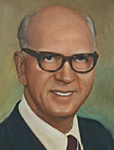
Fay Lilford Partlo
Term of office: 1954-1966
Education: Michigan College of Mining and Technology (E.M. 1923, B.S. 1926), University
Wisconsin (Ph.M. 1930)
A lifelong educator, Partlo assumed the Mines presidency in 1954. During his tenure, the Chemistry/Chemical Engineering Building, March/Dake Hall, the Forest Service Experiment Station, Surbeck Center and the Mineral Industries Building were opened. The Partlo presidency saw the first M-Day queen crowned, the first funded research and the first computer system. During Partlo’s years in office, enrollment topped 1000 for the first time.
Following his retirement from the presidency, Partlo remained on campus until 1971 as a professor of physics.
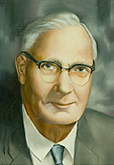
Earl Daniel Dake
Term of office: Acting President 1953-1954 and 1947-1948
Education: South Dakota School of Mines (B.S. 1924), Iowa State University (M.S. 1927)
Dake was the only person to have served twice in the capacity of Acting President, assuming the responsibility following the death of Joseph Connolly and then again when Warren Wilson resigned. Dake was the only native South Dakotan and the only graduate of SD Mines to occupy the president’s office.
Following his graduation in May 1924, Dake began his career on the Mines campus, leaving only briefly to complete is M.S. In addition to his roles as professor, department chair, and vice president, Dake helped design the Civil/Mechanical Building. During his second administration, Connolly Hall welcomed its first residents. In 1959, a wing of March/Dake Hall was named for him in recognition of his outstanding service to SDSM&T. When Dake retired in 1972, he had served the School of Mines for 48 years.
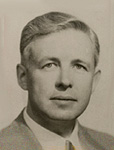
Warren Elvin Wilson
Term of office: 1948-1953
Education: Lehigh University (B.S. 1928), Cornell University (M.C.E. 1932), California
Institute of Technology (M.S., 1939); University of Iowa (Ph.D. 1941)
Warren Wilson first came to campus in 1935 as a professor of civil engineering; he served in that capacity until 1938. A decade later he returned to Mines as its president. During his tenure, the Civil/Mechanical Building opened its doors and the yearbook (“The Engineer”) began. Wilson started the tradition of an annual honors day and created a separate office for graduate education.

Joseph Peter Connolly
Term of office: 1935-1947, died in office; Acting President 1935
Education: Oberlin College (A.B. 1912); University of Missouri (M.A. 1915), Harvard
University (M.A. 1916, Ph.D. 1927)
Connolly arrived on campus in 1919 to teach mineralogy and petrography. He led the university during the illness and subsequent death of President O’Harra. Following O’Harra’s death in 1935, Connolly was appointed acting president before being named president in September 1935.
During Connolly’s administration the first master’s degree program began, the name of the institution was changed from South Dakota School of Mines to South Dakota School of Mines and Technology and a school seal was created. Connolly was an integral part of the National Geographic Society’s famous Badlands Expedition. He led the campus through World War II when an Army training unit was established on campus. O’Harra Stadium was completed, the O’Harra Building and the Bureau of Mines Building were constructed and the Maintenance Building and Campus Place for married students were opened while Connolly was president. During his tenure enrollment doubled to more than 600 students.
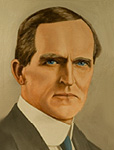
Cleophas Cisney O'Harra
Term of office: 1911-1935, died in office
Education: Carthage College (B.A. 1891), Johns Hopkins University (Ph.D. 1896)
O'Harra arrived on campus in 1898 to teach geology and mineralogy, he served as vice president of the institution before being appointed president in 1911.
O'Harra was responsible for the construction of the “M” on Cowboy Hill, he oversaw the first M-Day, the introduction of freshman beanies, and the formation of the M Club. During World War I O’Harra welcomed an Army training detachment. The McLaury and Physical Training buildings were completed as well as an Army barracks and mess hall during his tenure; he began construction of the football stadium, dismissing classes for a day so that students and faculty could assist. The football team received a name, “Hardrock Men”, and the campus made its first radio broadcast from its own station (the first in the state); preparatory courses ended, and the Alumni Association formed during O’Harra’s presidency.
O’Harra assisted with the arrangements for National Geographic’s historic stratosphere flight, helped determine the location of Mt. Rushmore; and welcomed two U.S. presidents to the campus. During O’Harra’s presidency campus enrollment increased from around 60 students to nearly 400.
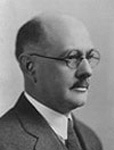
Charles Herman Fulton
Term of office: 1906-1911
Education: Columbia University School of Mines (M.E. 1897); South Dakota State College
(Sc.D. 1911)
Fulton spent 6 years as a professor of mining engineering and metallurgy at the School of Mines prior to being appointed president in 1906. During the time he led the institution, the first “Book of Views” was published and the college won its first baseball championship. Fulton was responsible for hiring the School of Mines’ first athletic director.
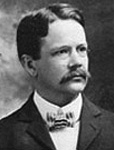
Robert Lincoln Slagle
Term of office: 1898-1906
Education: Lafayette College (B.A. 1887, M.A. 1890); Johns Hopkins (Ph.D. 1894)
Slagle taught chemistry at the School of Mines for one semester prior to being named president, and was the first leader to officially be called “president.” Slagle added enrichment classes such as English, Latin and history to the school’s curriculum. The Main Building was constructed during his term and he established the Mining Experiment Station. Slagle organized the institution’s first formal expedition into the Badlands and discovered “School of Mines Canyon”. During his term, the first housing for student was secured.
After leaving the School of Mines, Slagle served as president of two other South Dakota institutions, South Dakota State College in Brookings and University of South Dakota in Vermillion.
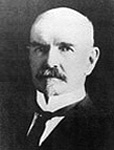
Valentine Trant McGillycuddy
Term of office: 1894-1897
Education: Detroit College of Medicine (M.D. 1869)
As president of the institution’s Board of Trustees, Valentine McGillycuddy resigned from the Board to assume the leadership of the campus during a difficult time in the school’s history. During his time on campus, McGillycuddy not only was the leader of the school, he taught geology and in 1896 was elected mayor of Rapid City. McGillycuddy had a storied past, having been a member of the Newton-Jenney Black Hills expedition of 1875, an Indian Agent on the Pine Ridge Reservation, an explorer, and the first non-native to summit Black Elk Peak (formerly Harney Peak). During his time on campus, the first football team was formed and a campus improvement project was initiated that included planting of shade trees and lawns.

Walter Proctor Jenney
Term of office: 1893
Education: Columbia University (E.M. 1871, Ph.D. 1877)
An esteemed government geologist, Jenney was one of the leaders of the Newton-Jenney Black Hills Expedition of 1875. Jenney holds the distinction of having the shortest term of office, serving just four months. During his brief time on campus, Jenney began the institution’s first formal newspaper advertisements, promoting both the educational opportunities of the school and the assaying services provided to the region.
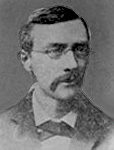
William Parker Headden
Term of office: 1891-1893
Education: Dickinson (A.B. 1872, A.M. 1875), University of Giessen (Ph.D. 1874)
Headden first arrived on the School of Mines campus in 1888 as a professor of chemistry. He was terminated in 1890, but was rehired in 1891 assuming the leadership role. During Headden’s tenure, Prep School courses were formalized and the campus began night classes for local residents, offering courses in bookkeeping. Headden opened the campus to the public, inviting them to attend lectures on chemistry and assaying and appointed the institution’s first Professor Emeritus.
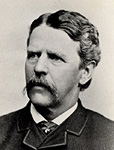
Samuel Cushman
Term of office: 1890-1891
Education: Brown University, Bridgewater State Normal School (1849)
A newspaper editor and businessman, Cushman came into office during a turbulent time in the history of the school. Cushman was a "commuting dean" living in Deadwood, catching the Monday morning train into Rapid City and returning to Deadwood on the Friday evening train. During his administration he kept the institution open and moving forward despite very challenging political times. When a new Dean was hired, Cushman returned to his business interests selling insurance and blasting powder.
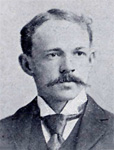
George Francis Duck
Term of office: 1889-1890
Education: Lehigh University (E.M. 1883)
George Duck was the youngest person to lead the School of Mines, having been appointed Dean at 25 years of age. Duck served during a very difficult time period as the region transitioned from a territory into a state. Duck, along with the entire faculty and staff, was dismissed at the end of the academic year in 1890. During his year in office, Duck established a classical course of study and officiated at the first commencement ceremony that honored multiple graduates.
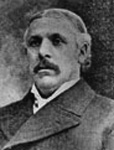
Franklin Reuben Carpenter
Term of office: 1886-1889
Education: Rector’s College, (B.A. 1868; M.A. 1887) Ohio University (Ph.D. 1888)
Franklin Carpenter was the first Dean of the Dakota School of Mines. After being appointed to the position, he traveled to the Eastern states to select and acquire furnishings, equipment and supplies for the new school. He oversaw the opening of the school, presided over the first commencement and saw the addition of a second building. Carpenter established the Museum of Geology and published the campus’ first scholarly work, “School of Mines Bulletin No. 1”. Carpenter remained associated with the school after his tenure ended being named the first Faculty Emeritus. His School of Mines Bulletin, “Preliminary report of the Dakota School of Mines upon the geology, mineral resources, and mills of the Black Hills of Dakota,” remains a well-respected authority.
The Liberal Arts Building was the third building constructed on campus. The first phase was completed in 1901 including the arch that served as the front entrance. Over the ensuing decades, the building became the nucleus of the campus, housing many functions.
Due to structural problems, the 93 year-old building was demolished during the summer of 1994. However, the arch was painstakingly dismantled by hand to facilitate its reassembly. Each block was chiseled out and numbered. This process allowed reconstruction of the arch much like a jigsaw puzzle.
In 1994, the Arch was adopted as the official logo of the South Dakota Mines Foundation.
The arch was reconstructed during the summer of 1995 using a design selected by the Save the Arch committee. The actual arch is surrounded by two smaller archways. The three-arch structure, now the Memorial Arch and Plaza, is representative of the first three buildings on campus, links South Dakota Mines' past and present and stands to pay tribute to the university's rich heritage.
Since 1920, each incoming freshman at South Dakota Mines has donned a beanie hat. The Pahasapa Quarterly from 1920, wrote that the sight of the “cap floating on the campus will serve as a pleasant reminder to visiting alumni of the days when they first wore the freshman headgear and of the various festivities connected with it.”
Today the voluntary tradition continues from the start of school until halftime of the homecoming game when frosh (as they are referred to prior to this event) run a lap around the track and then gather in the middle of the field in the shape of an M where they remove their beanies and are officially advanced to freshman status.
For the last three decades, these hats have been handmade by a group of local volunteers. To date the Rapid City CK Chapter of the Philanthropic Educational Organization (PEO) Sisterhood has sewn more than 11,000 Mines beanies. The group sells the beanies to Mines and the small profit they earn is put into a scholarship fund that sends young women to college. In the last 30 years, the group has raised more than $36,000.
“My husband, GroveRathbun (MinE52), has his beanie from 1948. We must be the only place in the world that still does beanies,” PEO Sisterhood member Jan Rathburn said of the Mines’ freshman rite of passage.
You can read more about the tradition in this article in Inside Higher Ed.
Here are some excerpts:
“The School of Mines is perhaps the only institution left in the country that still maintains the tradition of handing out freshman beanies -- a small felt hat that signifies a student's newbie status -- as a way to broadcast that the new students might need some assistance getting acclimated to the campus.
'Even if I was in a hurry, if a freshman looked lost, I would try to stop and help them,' said Mines alumni Will Smith (CE20).
The beanie tradition also creates camaraderie among the new students as they start their studies.
'It means you’re not alone in it, you always have a study buddy,’ Smith said. “I still talk to people I met getting my beanie and during homecoming.’”
The beanies worn at South Dakota Mines are green and yellow, the colors of our rival Black Hills State University. Incoming students wear these colors in jest, signifying that Mines freshmen are smarter than Black Hills State University seniors.
Traditions evolve over time. In 2019, a new tradition began that includes the cohort of incoming freshmen being ushered from the Surbeck Center towards the quad, welcomed by faculty and staff along the way. They then walk through the Arch to receive their beanies and learn the school song as part of student orientation. Prior to 2019, the beanies were given out to freshmen at the President’s Picnic during Welcome Week.